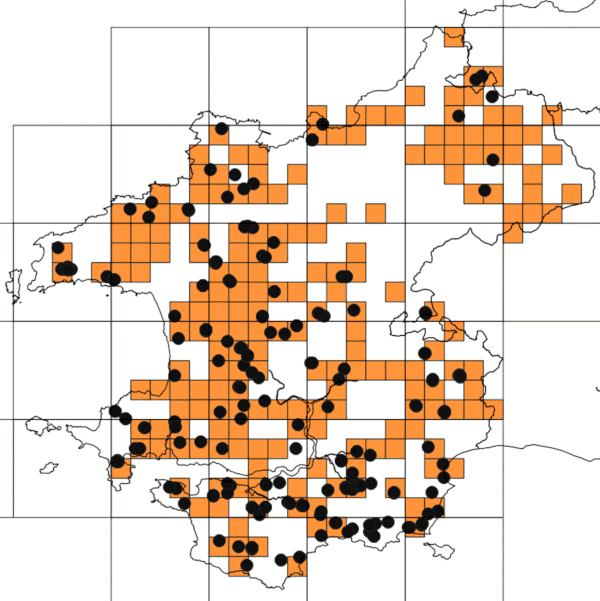Rookeries survey 2013/2014
 Saturday, April 11, 2020 at 12:48PM
Saturday, April 11, 2020 at 12:48PM In 2011/12 it was commented on by several observers that some rookeries had either disappeared, or declined considerably in parts of Pembrokeshire. In 2013 and 2014 birdwatchers were asked to count the nests in any rookeries they came across in the county. No attempt was made to find all rookeries, or to visit all tetrads where rookeries had previously been recorded.
A minimum of 3,776 apparently occupied rook nests was recorded in 2013/14 from 138 rookeries surveyed. The largest rookery (at Dale) contained 178 apparently occupied nests (AON). The average rookery size was 27 AON.
Rookeries were recorded within 110 tetrads, which represented about 50% of the tetrads where rookeries were found during the 2003-07 Pembrokeshire breeding birds atlas survey (Rees et al. 2009). During the 2013/14 survey, rookeries were recorded from an additional nine tetrads where there was no evidence of breeding reported during the 2003-07 atlas survey period. However, all bar one of these had previously been confirmed to have breeding rooks in the first Pembrokeshire breeding atlas survey (1984-88) (Donovan & Rees, 1994).
At least fourteen rookeries were found to have 'disappeared'. These had ranged in size from 9 to 102 AON in a census of south Pembrokeshire rookeries undertaken in 1996 (Little and Level 1996). No alternative sites were found in the vicinity of these rookeries in 2013/14, although there was anecdotal evidence of two of them having attempted to relocate in the five years subsequent to their last being occupied.
If the population of 3,776 AON, from about 50% of the tetrads with confirmed breeding rooks in 2003-07, is a typical of the population across the remaining 50% of un-surveyed tetrads in 2013/14, then a total county population of at least 7,550 AON is possible. This assumes that the average rookery size in the un-recorded parts (e.g. in the northeast) is similar to that for the surveyed rookeries in the remainder of the county.
Data from three previous censuses of the rook population (a BTO census of 1944-46, a Dyfed Wildlife Trust census of 1971 and a BTO census of 1975/76) suggested a population of between 8,000 and 10,000 pairs. Limited local surveys conducted over a period of 15 years in the 1980’s and 1990’s showed fluctuations in annual totals but stability overall. It was suggested that the population was still likely to be in this range in 2003-07 (Rees et al. 2009). Data from the 2013/2014 survey suggests a population closer to the lower estimate.

Orange squares show tetrads where rookeries were recorded in the 2003-07 atlas
Black circles show rookeries counted in 2013-14
 Pembrokeshire Avifauna committee | Comments Off |
Pembrokeshire Avifauna committee | Comments Off | 
